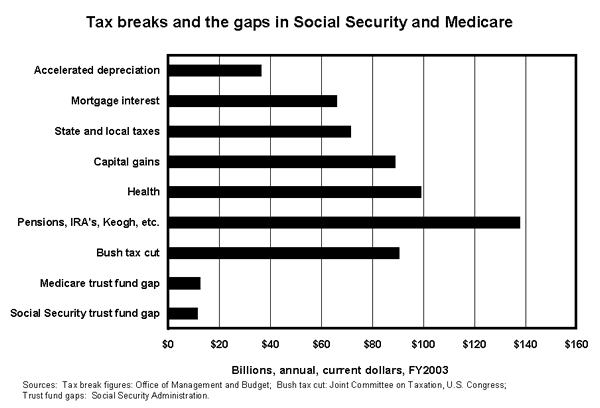A weekly presentation of downloadable charts and short analyses designed to graphically illustrate important economic issues. Updated every Wednesday.
Snapshot for April 17, 2002.
Tax breaks dwarf Social Security, Medicare shortfalls
The first six rows in the figure below show the costs of major categories of tax breaks in terms of annual revenue foregone by the federal government. In other words, the bars show the increased tax revenue if deductions and other tax preferences (sometimes called “loopholes”) in these areas were eliminated. While popular, all of these categories benefit the wealthy more than the average wage earner. Eliminating any of them would make possible a more progressive tax code. The seventh bar shows the cost of the regressive Bush tax cut package passed last June by Congress. (This week there will be a vote to extend these cuts beyond the year of their scheduled cancellation.)

The bottom pair of bars shows the annual revenue shortfalls of the Social Security and Medicare trust funds, based on 75-year solvency projections. Presently these trusts are able to pay all current benefits promised; the Social Security Administration says its fund is solvent through the year 2041, and Medicare is solvent until 2030. It is obvious that even a modest contraction in these tax breaks would easily eliminate any conceivable fiscal difficulties Social Security or Medicare might face in the future.
This week’s Snapshot by EPI economist Max B. Sawicky.
Check out the archive for past Economic Snapshots.
